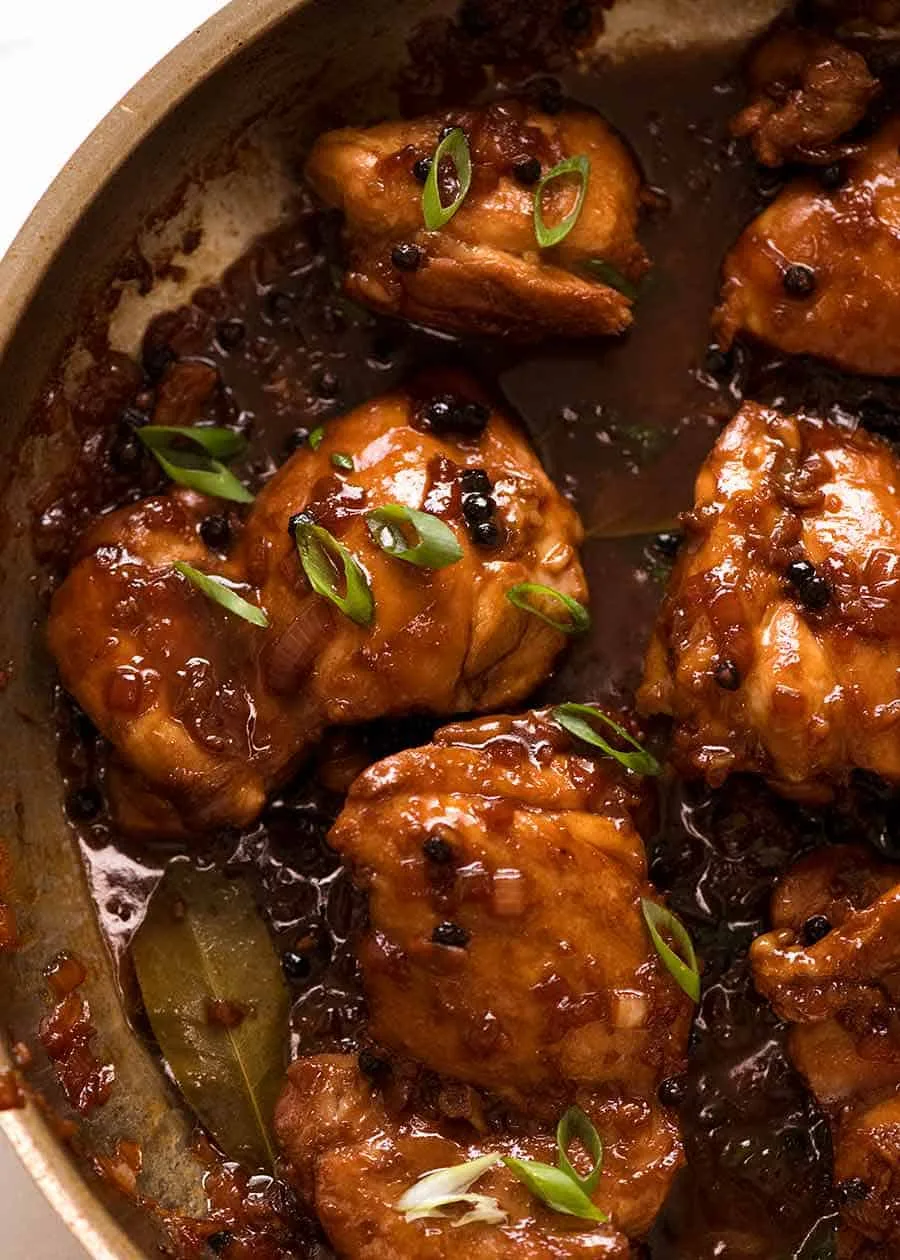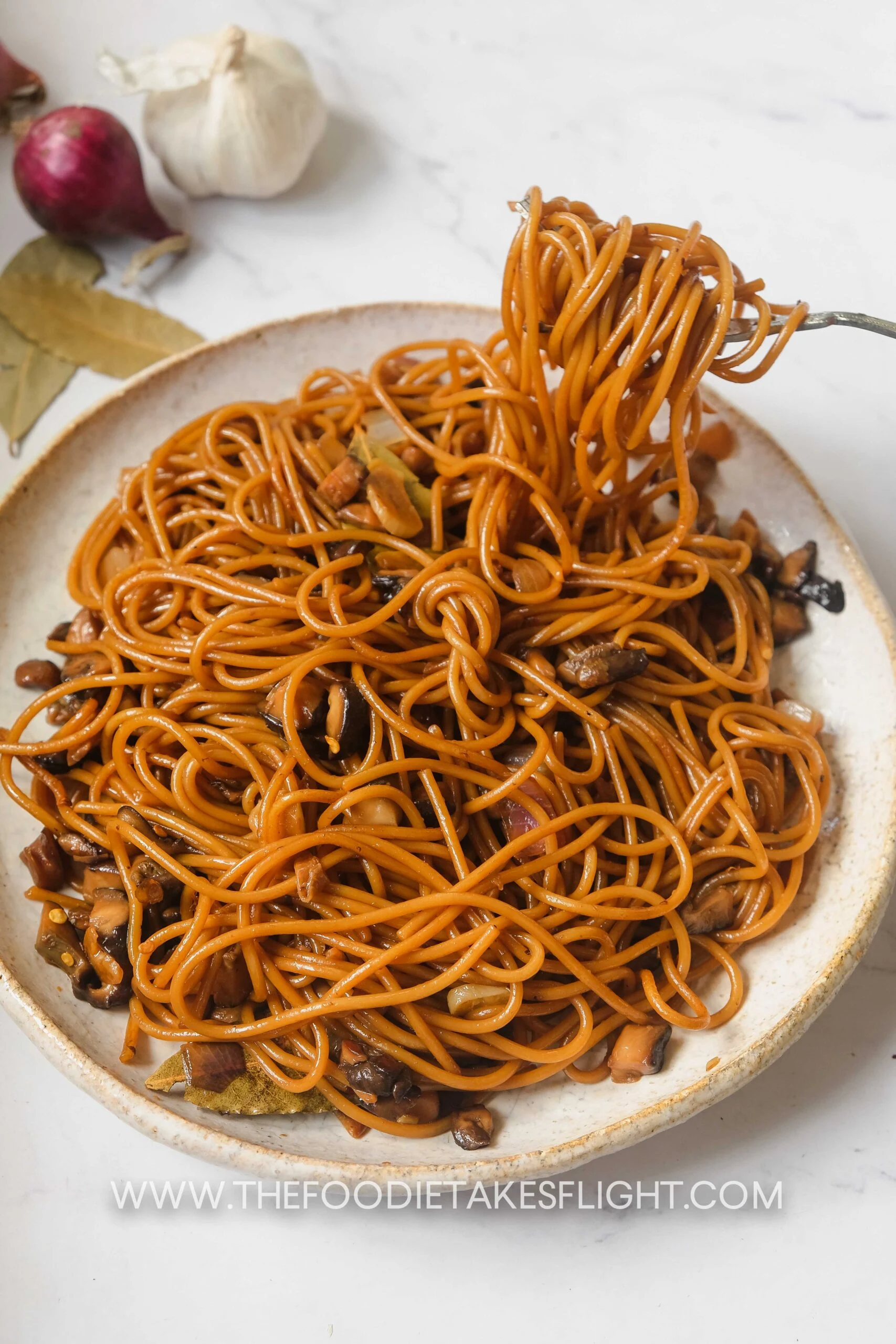"It is always funny when we realise our cultures overlap more than we differ." Greatist

My sources for blog posts come from all sorts of places. This one is from AI. Wix has taken to giving me three AI suggestions as to what I might write about, and I have been collecting those that have caught my eye in various ways. Today's title, minus the (con) is from AI. The (con) is relevant to what I found when I investigated pasta adobo.
My first thought, was surely not? But when I googled it - pasta adobo - up came a whole lot of recipes, of which, somewhat out of the ordinary, many were from commercial companies pushing various products, from big names like Nestlé to small companies which are obviously very local.
And this is where I started to become confused, because most of those pasta dishes didn't sound like they bore any resemblance to a Filipino adobo.
So let me take a step back to Filipino adobo. When I first saw that word adobo I immediately thought Philippines because I was vaguely aware that this was sort of the national Filipino dish. Indeed I had vague memories of having made it way back when from Charmaine Solomon's Complete Asian Cookbook.
In brief let me summarise what I learnt from Wikipedia - first - and others subequently. The word adobo comes from the Spanish 'adobar' which means - to marinate.
"originally this word was used to describe a pickling sauce that was made of olives, vinegar, and spices in Spain." Greatist
Now the native Filipinos who live in a tropical climate, needed to preserve their foods, which they did with vinegar and salt.
"So when the Spanish arrived and colonized the Philippines, they saw what the Filipino people did to their meat and probably said something like, “Oh! Adobo!” And, there you have it." Greatist.
I had by now, having checked out Filipino adobo a bit, recognised that there is no definitive recipe for Filipino adobo, because:
"Every Filipino family has its own recipe (and that recipe is definitely the best)" Sho Spaeth/Serious Eats
However, the common ingredients - always - are vinegar, soy sauce (which replaced the original salt), garlic, peppercorns and bay leaves. The Chinese section of the Philippine population also add sugar for a touch of sweetness. There are no chillis, no other spices and no tomatoes. So I found a few examples - mostly for chicken, although pork is often used as well, sometimes at the same time as the chicken. And, of course, you can actually follow the same process with just about anything.

Here is what I found: Adobong baboy - MarketMan/The Guardian - the most authentic of the lot - no soy sauce. The writer explains why:
"A traditional adobo uses pork (or chicken or vegetables), salt, natural coconut vinegar, garlic, peppercorns and bay leaves. It was traditionally slow-cooked in clay pots called “palayoks” over charcoal or wood fires for some 2-3 hours. In recent years, a very common shortcut (nearly 80% of modern kitchens do this) is to add soy sauce to the dish, and cook it over a gas flame for a much shorter period of time. Purists would turn their nose up at this modern take, but the reality is most folks have adapted this version of the dish." Market Man/The Guardian
And so they have, because all of the others that I chose to present included soy sauce - two almost identical versions of chicken adobo from Marion's Kitchen and Recipe Tin Eats; and one from Sho Spaeth of Serious Eats, which being Serious Eats, includes a whole lot of information of various kinds, including the advice that it always tastes better the next day, when it should be served with:
"a big pile of super-garlicky and slightly oily fried rice—the greasiness of the rice tempers both the salinity and the acidity of the adobo sauce." Sho Spaeth/ Serious Eats
That article Mexican adobo vs Filipino adobo on the Greatist website, along with the Wikipedia one on the Philippine adobo are worth a look by the way. Because it doesn't end there.

Having learnt about the Filipino adobo method - and looking at the pasta recipes I found, it quickly became apparent that quite a few of those recipes were hot and spicy. Indeed the first, authoratative version I found - in the sense that it came from a professionally recognised website - Food52 - Spicy adobo pasta had no vinegar and no soy sauce but lots of chilli in the form of chillies in adobo sauce - which reminded me that I had seen this ingredient in a few recipes of late, and had seen it on the shelves of the supermarket in the Mexican section. We are obviously talking about a different kind of adobo here.
So let's go back to the Spanish conquistadores, but this time in Latin America, where they found that the natives there were also preserving their food using vinegar, but instead of salt they used chillis, lots of spices and tomatoes.

"The base of Mexican adobo uses the traditional Spanish spices but adds indigenous ingredients to the mix: tomatoes and chilies. Thus, Mexican adobo is a fusion of indigenous and colonial influences." Greatist
An altogether different dish, but related by the need to preserve food in hot climates. This example of Mexican chicken adobo is from a website called The Novice Chef.
Having now learnt a little about the Filipino and Mexican adobos I could now see that my presumption that adobo pasta was a fusion of pasta and Filipino adobo dishes was not necessarily a given. However, let's remember that this was a completely ignorant, machine made, suggestion for a dish from AI. Interesting that humans had got there first. Wix's AI after all was only making suggestions based on what I had recently been writing about. Well I assume that's how it works, although I confess I don't now remember writing about adobo. But perhaps I mentioned it and on another day close to that one I talked about pasta.
As I looked at various recipes, I found that several of them talked about adobo flakes, chipotle chillis in adobo sauce and adobo sauce. What are all of these?

Adobo flakes - I assume that in some parts of the world you can buy these in packets. But after a little bit of searching I found that adobo flakes come from the Philippines and are made by shredding your adobo meat - adobo meat is always cooked until very tender - dunking the shreds in the sauce in which they have cooked and then frying them in oil until crisp.

Then you can make this Adobo flakes pasta - from a company called Eurorich which uses adobo sauce and adobo flakes, which I assume the company makes, but they do describe their dish as a Filipino fusion
I think it might have been their recipe in which I first found a reference to adobo sauce, which confused me for some time. Because was this sauce, hot, spicy and Mexican or was it salty and tangy from the Philippines. I suspect we are talking Mexican here, although, then again the Eurorich recipe uses adobo flakes which are Filipino. Yes they are - I just checked. Which makes this recipe a Filipino/Italian fusion.
But a Mexican adobo sauce does indeed exist:
"made with three types of dried Mexican chiles, lots of spices, vinegar, garlic, onion and tomatoes." The Novice Chef
And indeed you will find lots of American sites with recipes for an adobo sauce. This one is from Kevin is Cooking who describes it as:
"A traditional Mexican sauce made with ground ancho and guajillo chiles that has the consistency of a thick BBQ sauce"
He also has a recipe for Adobo seasoning but no recipe for a Mexican adobo although he does have one for a Filipino one. Maybe he's confused too, although his Filpino one does seem to be pretty Filipino. The sauce and the seasoning are Mexican like.

I almost forgot that increasingly trendy ingredient Chipotle chillis in adobo sauce. It crops up here and there where spicy heat is required. Those and jalapeño chillis in jars. And these you can indeed find on your local supermarket shelves. In the Mexican section.
Truth to tell I didn't find a lot of fusion adobo pasta recipes. Here are two - Vegan adobo pasta/The Foodie Takes Flight, made with mushrooms and which is a genuine kind of pasta dish with a Filipino touch, and Roy's pork adobo with angel hair pasta which is a recipe from Barilla and includes adobo flakes as well as other 'authentic' Filipino ingredients.
Or you can go Asian fusion with rice - or noodles? - by just using the leftover sauce from your Filipino adobo:
"That stuff is GOLD. I use it to make Filipino Chicken Adobo fried rice – just fry up cooked rice with chopped up pieces of this chicken, some chopped Asian greens and the sauce. The sauce is so flavoursome that you don’t need anything else!" Nagi Maehashi
It was a footnote to her chicken adobo recipe.

And one last thing, Noor Murad - Ottolenghi's ex OTK kitchen chief concocted this dish Roast pork belly, with apple, soy and ginger, inspired by the Filipino adobo they said. The apples provide the sweetness. The vinegar is apple cider, and there are bay leaves, soy sauce and peppercorns. So pretty close really. Long, slow cooking too.
So is AI ahead of the trend here? Are there more adobo pasta dishes to come. Is Mexican/Italian a thing, or indeed Filipino/Italian? Will we be seeing more?
In the meantime have a go at a Filipino adobo. That marinading which seems to be the whole justification for the name, often seems not to be an actual marinade and almost never a long one. 'Marinading' in fact doesn't actually seem to mean what we generally understand to be marinading, but means slow cooking in what might otherwise be a marinade. And as Wikipedia says:
"Almost every ingredient can be changed according to personal preference."
Don't be confused, just go with how you feel on the day.

V - Not a lot - well a few, but not very good photos - verge, verandah, view, V, valley, but I did see this beautiful Gang gang cockatoo eating the hawthorn berries. I'm told it's endangered.
YEARS GONE BY
February 24
2023 - A shopping list story
2019 - A bush wedding - the reason there have been no posts for several days this year. We were preparing for my niece's wedding in our garden.
2018 - The perfume of tomatoes
A rare full house.












Comentarios